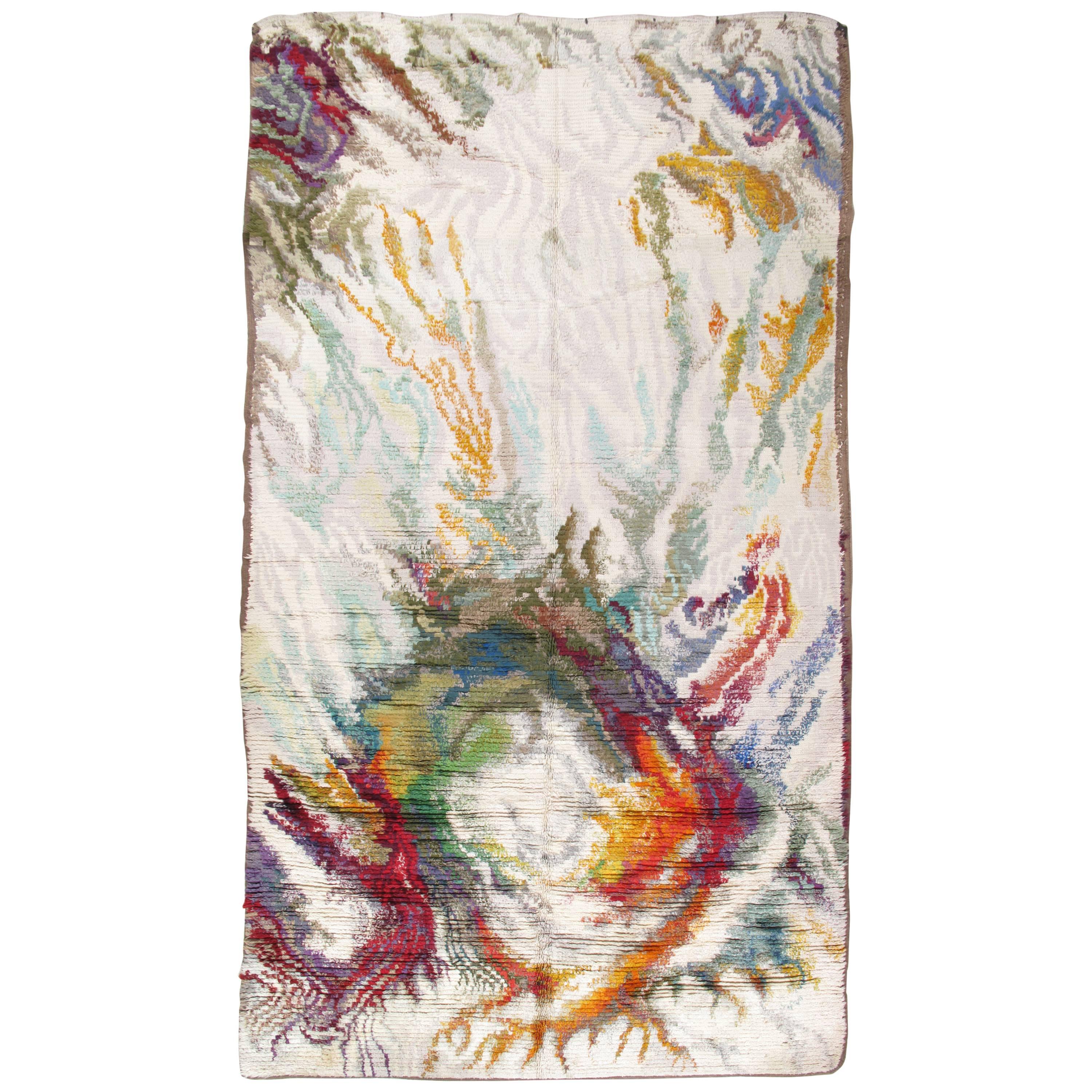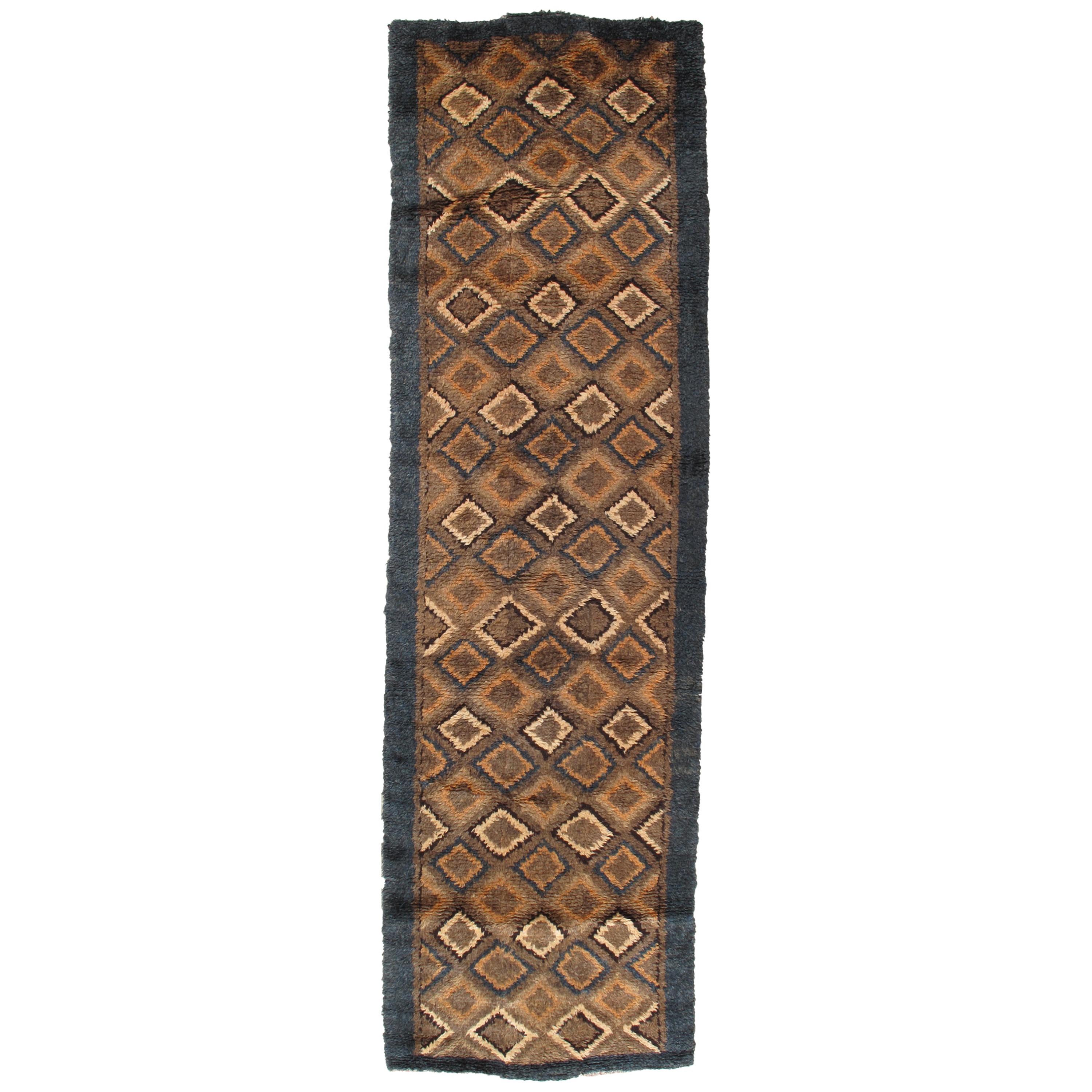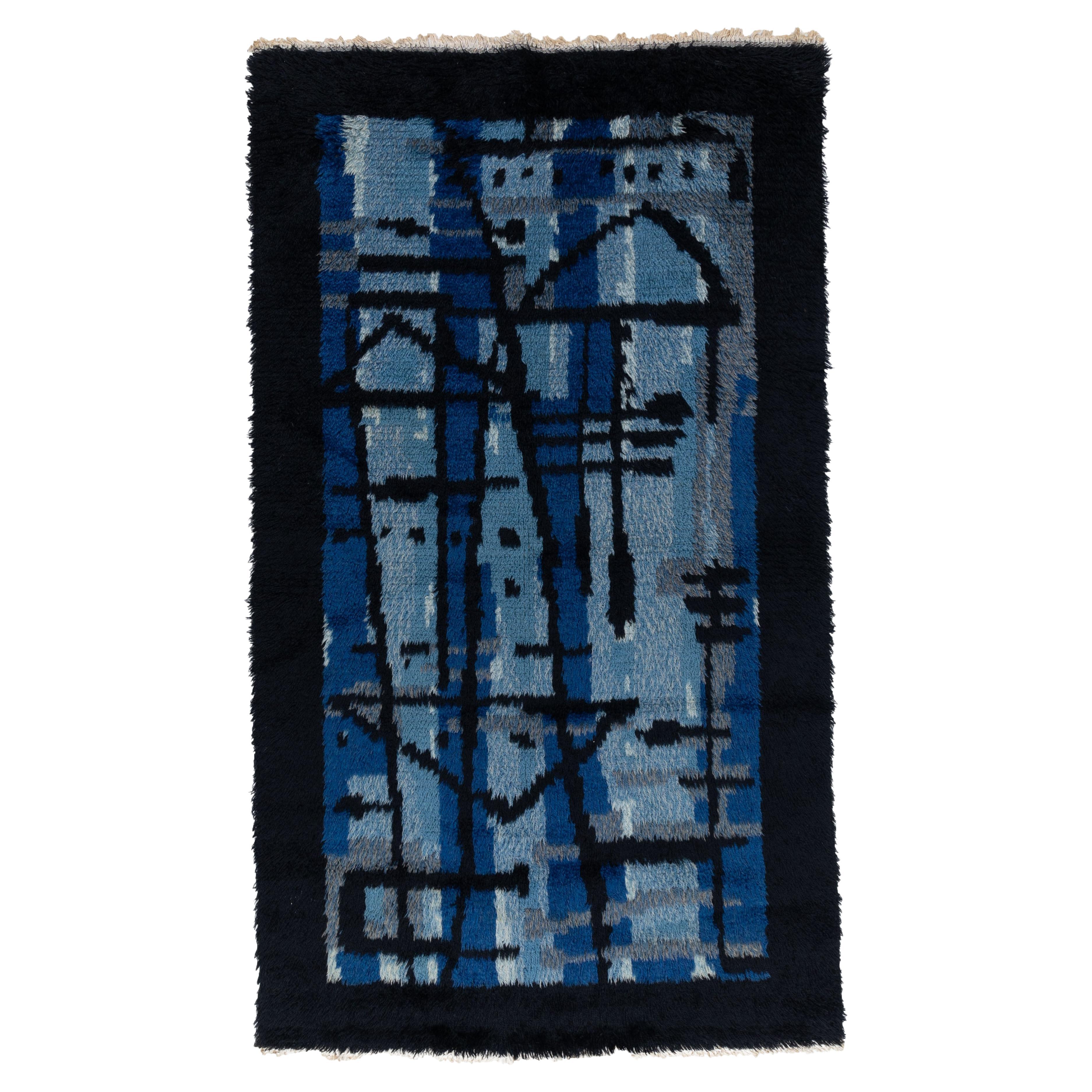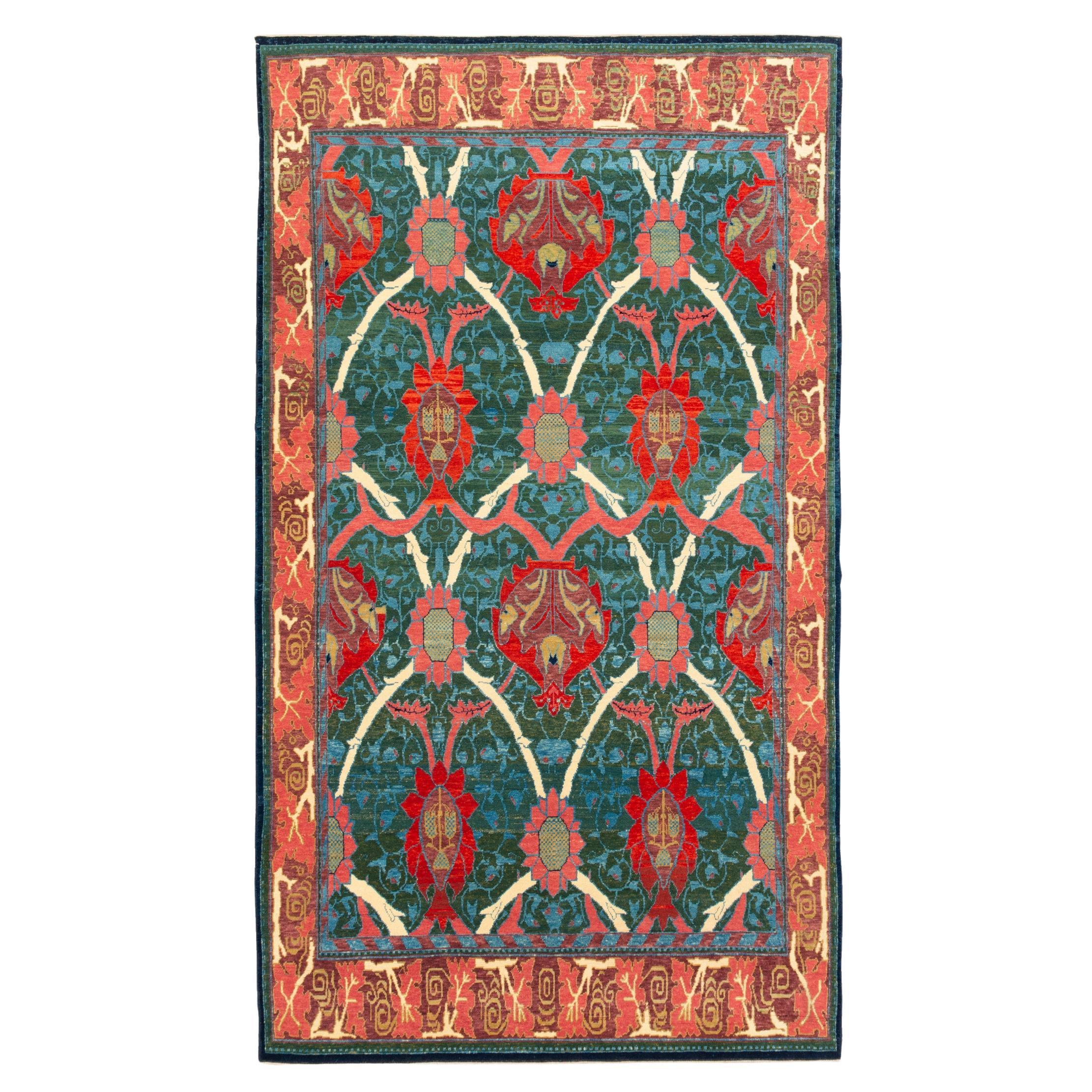Items Similar to Vintage Rya Carpet, Swedish Rug, Colorful
Want more images or videos?
Request additional images or videos from the seller
1 of 10
Vintage Rya Carpet, Swedish Rug, Colorful
About the Item
1960s Swedish Rya rug with a colorful, plush wool pile. Size: 4'6" X 6'7".
- Dimensions:Height: 79 in (200.66 cm)Width: 54 in (137.16 cm)Length: 79 in (200.66 cm)
- Style:Mid-Century Modern (Of the Period)
- Materials and Techniques:
- Place of Origin:
- Period:
- Date of Manufacture:1960
- Condition:
- Seller Location:Port Washington, NY
- Reference Number:
About the Seller
5.0
Vetted Seller
These experienced sellers undergo a comprehensive evaluation by our team of in-house experts.
Established in 1980
1stDibs seller since 2013
141 sales on 1stDibs
Typical response time: 1 hour
- ShippingRetrieving quote...Ships From: Port Washington, NY
- Return PolicyA return for this item may be initiated within 3 days of delivery.
More From This SellerView All
- Vintage Rya Handmade Carpet, Multicolor Wool Carpet-Colorful, Vibrant, WhiteLocated in Port Washington, NYRya rugs are the traditional Scandinavian rugs made in Sweden and Finland, and word “Rya” actually means Rug. The vintage Scandinavian Rya rugs that were made in Sweden have extremel...Category
Mid-20th Century Scandinavian Western European Rugs
MaterialsWool
- Vintage Rya Carpet, Swedish, Soft Colors, Mid-Century ModernLocated in Port Washington, NY1950s Swedish Rya rug with plush wool pile. Measures: 2'11" x 9'9".Category
Mid-20th Century Swedish Mid-Century Modern Western European Rugs
MaterialsWool
- Vintage Rya Handmade Carpet, Swedish Rug, Colorful and Vibrant, WoolLocated in Port Washington, NY1950s Swedish Rya rug with a colorful, vibrant, plush wool pile. Size: 6 X 8.Category
Mid-20th Century Swedish Mid-Century Modern Russian and Scandinavian Rugs
MaterialsWool
- Hand Woven Rug, Signed by Maurice Andre, 1950 French Piece, Limited EditionBy Maurice AndréLocated in Port Washington, NYAn exceptional rug made in Aubusson, by Maurice André, France 1950. This Post-modern, Forme-Libre, Geometrical Abstraction, piece is made in thick wool i...Category
Vintage 1950s French Mid-Century Modern Western European Rugs
MaterialsWool
- Vintage Navajo Carpet, Oriental Rug, Handmade Wool Rug, Red, Black, Ivory, BoldLocated in Port Washington, NYNavajo rugs and blankets are textiles produced by Navajo people of the Four Corners area of the United States. Navajo textiles are highly regarded and have been sought after as trade items for over 150 years. Commercial production of handwoven blankets and rugs has been an important element of the Navajo economy. As one expert expresses it, "Classic Navajo serapes...Category
Early 20th Century American Navajo North and South American Rugs
MaterialsWool
- Vintage Navajo Carpet, Folk Rug, Handmade Wool, Beige, Caramel, TanLocated in Port Washington, NYNavajo rugs and blankets are textiles produced by Navajo people of the four corners area of the United States. Navajo textiles are highly regarded and have been sought after as trade...Category
Mid-20th Century American Navajo North and South American Rugs
MaterialsWool
You May Also Like
- Gianni Versace Collection Black and Gold Designer Carpet, Rug. BaroccoBy Gianni VersaceLocated in Berlin, DEExtremely rare and unique carpet by Gianni Versace. From first owner. Carpet has light pile abrasion on one side. Overall good condition. Including "Certificate of Authenticity" f...Category
20th Century Italian Modern Western European Rugs
MaterialsWool
- Vintage Swedish Rya RugLocated in West Palm Beach, FLVintage Swedish Rya RugCategory
Mid-20th Century Swedish Mid-Century Modern Western European Rugs
MaterialsWool, Cotton
- Ararat Rugs Holland Park William Morris Carpet, Arts and Crafts, Natural DyedBy Ararat RugsLocated in Tokyo, JPThe source of carpet comes from the book Arts & Crafts Carpets, by Malcolm Haslam, and David Black, 1991, fig.49. This Hammersmith carpet was designed by William Morris in 1882, in the United Kingdom. In 1887 English artist and bookbinder T.J. Cobden Sanderson, suggested that a new group be named the “Arts and Crafts Exhibition Society” As a result, he was the first to use the term “Art and Crafts” and also is credited with naming this new emerging movement. The Arts & Crafts movement was inspired by the degradation of product standards that resulted from the factory production age. The rise of machinery in manufacturing caused a noticeable decline in uniqueness and crafts. These anti-Industrial reformers promoted economic advancement and social change. They wanted to eliminate poor quality and “artificial” items from 19th century British society. They saw a plethora of uninteresting items on display at the Great Exhibition of 1851 and became inspired to launch a Campaign for originality and uniqueness. William Morris was an English designer, as well as an uplifting social activist and writer. Morris is credited with sparking the rebirth of textile arts and traditional means of production. In 1861, Morris and a small group of designers opened an incredibly fashionable design company that grew to be largely successful. Morris left behind works in many different mediums such as textiles, books, furniture, stained glass, and area rugs. But in the end, he is most remembered for the magnificent wallpapers that he designed. He got much of his inspiration from the natural world. Through his interior decor pieces, Morris set out to convert rooms or spaces into meadows with beautiful trees meandering, vines, and plants. This concept of taking something Industrial and man-made, and converting it into something natural is what William Morris meant when he once said: “-any decoration is futile… when it does not remind you of something beyond itself.” Morris was a huge commercial success and his works are some of the most sought-after pieces in the world of design and decor. He is also credited with almost single-handedly reviving the British textile arts as well as their methods of production. Morris was also severely critical of machine-made goods, exclaiming, “Today almost all wares that are made by civilized man are shabbily and pretentiously ugly.” Houses were filled “with tons and tons of unutterable rubbish,” which, he suggested, should be heaped onto a gigantic bonfire! “As a condition of life, production by machinery is altogether evil.” He masterminded one of the most well-known styles of Arts & Crafts, recognizable by its twisting and arching patterns and simple, elegant floral design prints. Although Morris believed that Persian carpets were the greatest ever made, he adopted the coarser Turkish (Ghiordes) knot for his hand knotted carpet manufacture. They were woven at a thickness of 25 knots to the square inch at that time. Morris & Co.’s rugs are reminiscent of Persian garden design carpets in that they are smartly styled depictions of English gardens. Donegal also started producing highly desirable Irish rugs in the late 19th century. The Donegal rugs were predominantly created by English architects C.F.A. Voysey and Gavin Morton. The handcrafted Voysey rugs are typically woven in England, Scotland, and Ireland. Voysey had a knack for using contrasting shapes to decorate flat monochromatic spaces. Dark outlines added a flair of drama to his signature pattern and Celtic rug...Category
21st Century and Contemporary Turkish Arts and Crafts Western European Rugs
MaterialsWool, Natural Fiber, Organic Material
- Abstract Scandinavian Multicolor High Pile Rya Rug Carpet, Sweden, 1960sBy Ege Rya, Verner PantonLocated in Kirchlengern, DEArticle: High pile Rya rug Decade: 1960s Origin: Scandinavia Sweden Material: 100% wool This rug is a great example of 1960s pop art interior. Made in high quality Rya ...Category
Mid-20th Century Swedish Mid-Century Modern Western European Rugs
MaterialsWool
- Abstract Scandinavian High Pile Abstract Rya Rug Carpet, Sweden, 1960sBy Ege Rya, Verner PantonLocated in Kirchlengern, DEArticle: High pile Rya rug Decade: 1960s Origin: Scandinavia Sweden Material: 100% wool This rug is a great example of 1960s pop art interior. Made in high quality Rya weaving technique in Sweden in the 1960s, it is made of 100% wool. It features a Minimalist and abstract multi-color pattern in a color mix of grey, red tones etc. fantastic Scandinavian handweaving quality of the 1960s. An interesting piece for every modern home in a lovely vintage condition. Would fit well in any home with 1960s-1970s decor...Category
Mid-20th Century Swedish Mid-Century Modern Western European Rugs
MaterialsWool
- Abstract Scandinavian Multicolor High Pile Rya Rug Carpet, Sweden, 1960sBy Ege Rya, Verner PantonLocated in Kirchlengern, DEArticle: High pile Rya rug Decade: 1960s Origin: Scandinavia Sweden Material: 100% wool This rug is a great example of 1960s pop art interior. Made...Category
Mid-20th Century Swedish Mid-Century Modern Western European Rugs
MaterialsWool
Recently Viewed
View AllMore Ways To Browse
Colorful Retro Rug
Vintage Rug Colorful
Mid Century Colorful Rug
Colorful Swedish Rug
Vintage Console Table Furniture
Leg Stretchers
Console Table Vintage Tables
Chairs With Upholstered Seats
Wood Table 19th
Entry Hall Side Tables
Lounge Seat
Vintage Club
Design Sofa Used
Used Side Chairs
Silver And Wood
Kitchen Dining Table
19th Century Wood Table
Dining Table Kitchen Table





